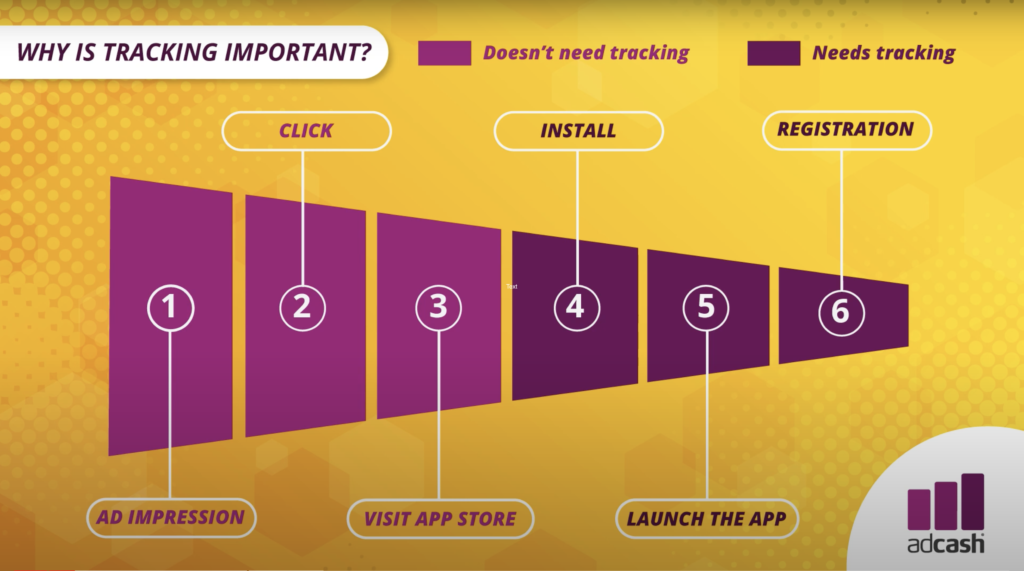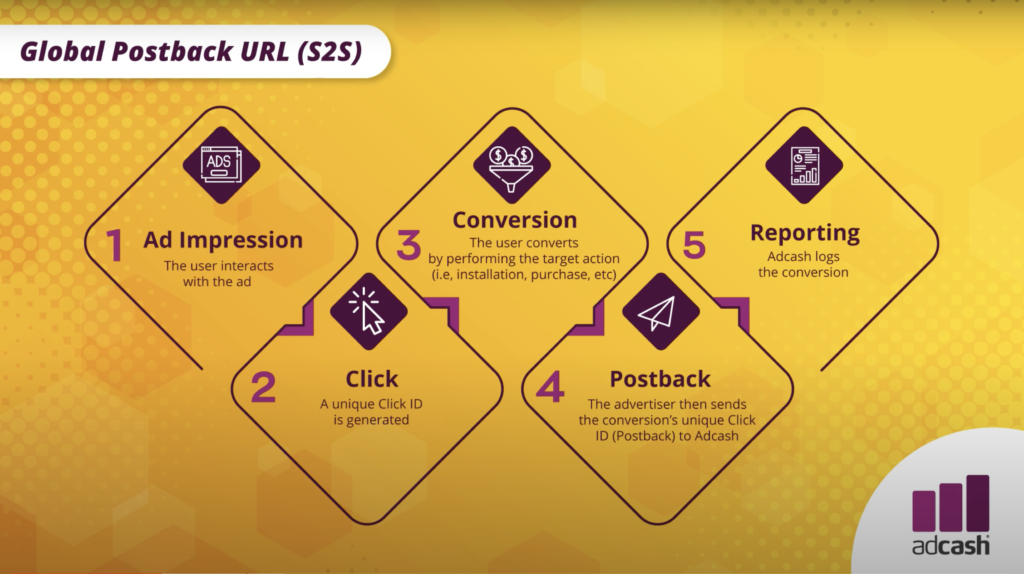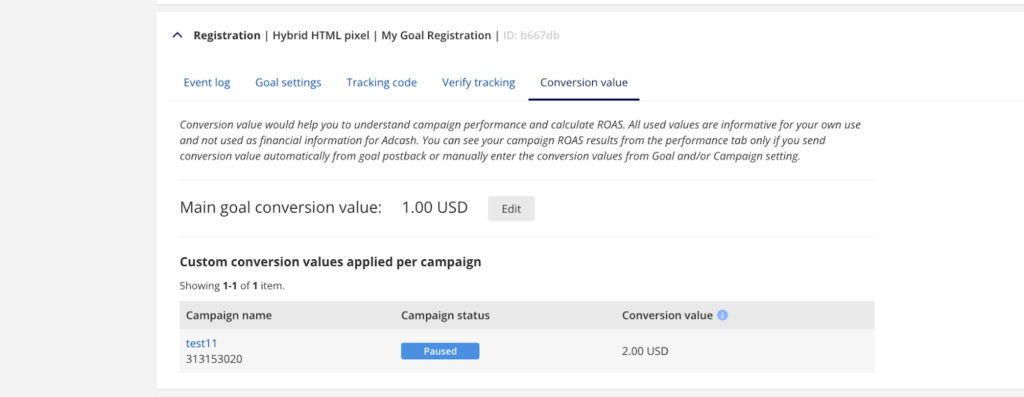How do you know your campaign is successful? Which values are the most important from your campaign tracking? If you’ve been asked or thought about these, you’re not alone.
From veterans to novices, online advertising professionals of any experience can struggle with the best campaign tracking tactics.
So let’s talk about it. But before we get into it, if you’re unfamiliar with campaign tracking, the short and sweet answer is that it collects data on your campaign performance and allows you to optimize the campaign.
But before we go further, if you haven’t set up tracking yet or don’t know how – we’ve got you covered. Our Advertiser Manager, Evgeniy, neatly lays down the tracking methods and how you can set it up yourself.
Why is Tracking Important?
For different payouts and “cost-per” (CPA vs. CPC) events, it’s essential to differentiate between your designated target. Also, when using CPA Target for conversions, you must track this to follow the results. When tracking, consider exploring and using the conversion value tab.

What are the Tracking Options?
Adcash allows you to track on both mobile and desktop. In your campaign tracking, you can integrate three methods:
Global Postback URL (S2S)
S2S means server-to-server. More complicated than pixel tracking, this method relies solely on the advertiser’s server. When a user goes to an HTTP website from an ad, that click alerts the tracking to commence under the ID connected. The ID (postback) is then sent back to Adcash where it is logged and reported under your campaign.

Campaign HTML Pixel
Tracking pixels? How can that help? Well, the pixel used for tracking acts as if it’s clandestine, but in a good way. Located away from sight on the webpage, the pixel is tracked when leaving the page. This option can only be used on one event during one campaign.
Hybrid HTML Pixel
A blend between S2S and pixel tracking, this hybrid approach allows you to integrate the tracking method on multiple campaigns (as S2S does) but through an HTML (as pixel does).

Goal Tracking
Now that you’ve learned how to set up tracking, the importance of tracking, and the different tracking methods, let’s finish with goal tracking.
If you haven’t created a “goal” before or don’t know which elements to highlight for your goal, you can find detailed information here. You can add a new goal in your “tracking section” on the Adcash platform. In this process, you’ll be able to:
- Track Actions of your choice (registration, installation, etc.)
- Determine how you would like to track depending on the number of conversions (you can even customize your tracking)
- Save and use a tracking code for integration
Test Goal Tracking

In this example, the tracking method is the Global Postback URL (S2S). As you can see, there’s a verification process for the campaign tracking, so it’s a great option to start testing the unique campaign URL you used.
But, something is missing…
Conversion Value
An important part of your goal tracking is choosing a main goal for your desired conversion value, i.e., as shown in the example below, $1. This applies to all campaigns unless you set it up specifically per campaign (more below). You can now explore the conversion value tab within the same “Tracking” section as the example above.

Campaign Conversion Value
We recently added a new feature to enhance your campaign tracking. Calculating your ROAS has never been easier. With campaign conversion value, you can understand your campaign’s performance more in-depth through two options:
- Automatic is taken directly from the postback under specific parameter conditions leading to the conversion value
- Manual allows for a more involved process if the postback can’t be used.In this option, you can add a “fixed” value, allowing you to customize your conversion value per campaign. PS! The campaign conversion value will take priority over the “main goal conversion value” that you have set in the tracking settings.

A Final Note
It can be tricky tracking your campaign or choosing what you want to track with all the options and ways to interpret data, especially under the event log tab, so consider using this list of terms to help you navigate.
| Event Date |
Day and time when the event was received and recorded by Adcash. |
| Pixel ID |
Event pixel identifier used to report conversion (it might be empty if an old event pixel has been used for tracking). |
| Campaign ID |
An advertising campaign identifier that owns this particular reported event. In statistics, this conversion will be assigned to a specific campaign ID. Country – Country of a user who initiated the event (based on IP geolocation). |
| Variable |
Your personal information is sent to Adcash through the tracking code (it can be empty if a tracking pixel does not use the parameter “variable=” or information is not passed through this parameter). |
| Status |
Accepted or rejected. The accepted conversions will be counted in the statistics. |
| Click ID |
Unique ad click ID assigned to the event. The same click ID can be used for different events (this value will be empty if the event has been rejected). |
| Price |
The amount paid for a particular conversion (based on the campaign payout settings). This amount will be deducted from your balance. The amount could be 0.00 when the event is informative and not related to any campaign payouts. |
| Revenue Value |
The amount of revenue that you have earned for this event. The revenue value can be changed or added in the pixel’s listing menu. If the pixel does not have a revenue value, then the amount will be 0.00. Please note that the revenue value is an informative amount and will not affect your billing. |
| Zone ID |
The traffic source ID from where your ad campaign has received a user who generated the event. |
| UDID |
Mobile phone identifier passed through the tracking code (it can be empty if the tracking pixel does not use the parameter “udid=” or the information is not passed through this parameter) |
| TID |
Unique Transaction ID generated by your system (it can be empty if the tracking pixel does not use the parameter “tid=” or the information is not passed through this parameter) |
| Device Type |
User device |
| Browser |
User browser name |
| Browser Lang |
User main browser language |
We understand the importance of analytics. We constantly assess and update tools and practices to ensure your campaign optimization is a seamless experience.
Let us know in the comments how tracking has helped in your campaign optimization.
We’re always here to help, so contact us anytime.
-Adcash Team









Join the conversation
0 comments
Submit a comment
Your email address will not be published. Required fields are marked *